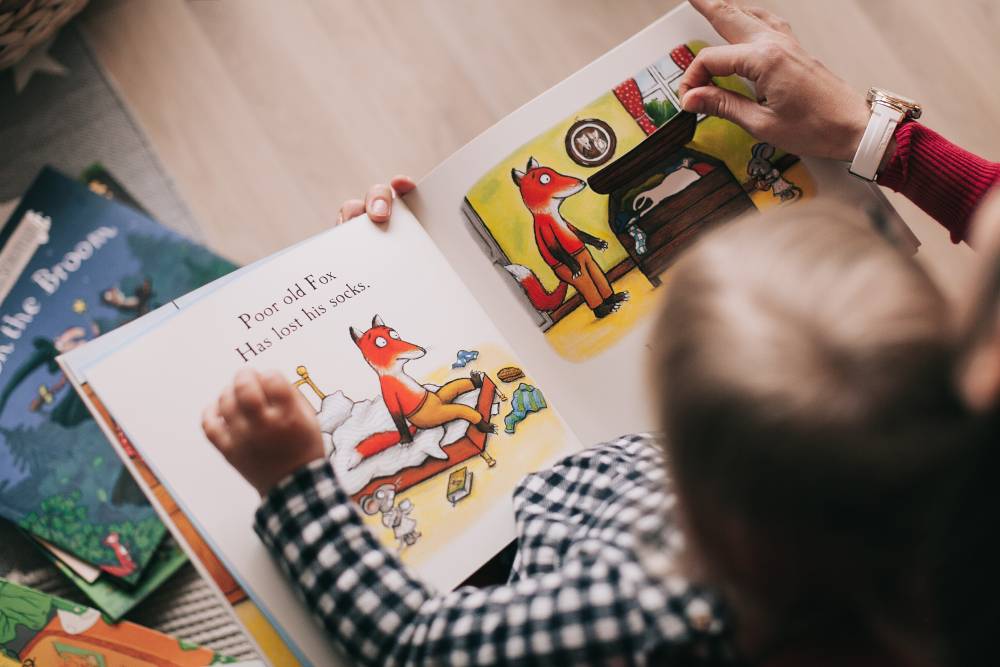A most significant role for teachers in fostering childen's reading development is the provision of a broad range of supportive texts which allow children to read independently and build up a solid history of success as readers.
It has long been recognised that one of the most important influences on childen's success as readers is the kind of materials which they can read. Children cannot function effectively on books which confront them with overwhelming difficulties.
So what kinds of texts do in fact support children's functioning and allow them to be successful?
Texts that:
- Fulfil children's expectations
- Allow them to confirm their understandings about reading
- Provide the kind of challenges which stretch the boundaries of children's current competencies.
What expectations do children bring to reading?
- That the text makes sense because it connects logically and has a 'unity of meaning'.
- That the text uses natural language which retains the richness and variety of cues with which the children are familiar in speech.
- That the text layout and print styles and size are reasonably consisitent
- That the 'Topic, subject matter, concepts on which the text is based relate to the child's experiences.' Lynn Badger
What kinds of books can fill our classroom libraries to meet these expectations?
Bill Martin Jr. describes different categories for the ways in which stories and poems are put together that support young readers.
- Repetitive
- Cumulative
- Familiar cultural
- Chronological
- Problem-centred
- Rhyme-rhythm scheme
These kinds of texts provide a rich network of support and pleasure. The more children can read books which have these supportive features, the more they can extend and broaden the information base on which their processing depends.
The more children know about books the easier it is for them to constrain the range of possible options and to predict with greater accuracy the messages carried by print.
'The superb parradox of this situation is that the more information children have available to them, the less they will actually need to use to establish the precise message of appropariate texts.' Badger, L.
We can effectively lead our children's development with stocks of highly supportive books in our classroom libraries.
Side-by-side with these texts we also:
- Lead childen's development by providing many demonstrations of the way readers successfully resolve a variety of the challenges which difficult texts present
- Find texts that allow any children who may not be progressing as readers to restore sound functioning. This is the most significant intervention to support the growing reader.
What are some book titles that can be recommended for their supportive text?
Ahlberg, Janet and Allen, Each Peach Pear Plum - simple rhyming couplets, simple circular plot.
- Allen, Pamela, Who Sank the Boat? - Story is episodic, sentence structure repeated for each episode, repetitive rhyming pattern.
- Barret, Judi, Animals Should Definitely Not Wear Clothing - repetitive language pattern reflects children's talk, book title repeated on first page and forms basis for the story, text expands the sentence which begins the story.
- Birmingham, John, The Blanket - Reflects everyday experiences, story follows logical sequence, predictable sentence patterns closely aligned to children's oral language.
- Carle, Eric, Have You Seen My Cat? - Nine different words are used to tell the entire story, 'This is not my cat' repeated every second page.
- Hutchins, Pat, Rosie's Walk - Pictures carry most of the story, pictures mirror the text.
- Keats, Ezra Jack, Over in the Meadow - episodic story with ten episodes exactly the same except character and setting change, six line sentence pattern repeated in each episode, strong rhyme and rhythm, based on number sepquence 1 - 10.
- Kent, Jack, The Fat Cat - Cumulative structure.
- Sutton, Eve, My Cat Likes to Hide in Boxes - Cumulative structure, rhyming couplets.
- Watanbe, Shiego, How Do I Put it On? - Four problems, four episodes identically constructed, four one line sentences spread over four pages.
- Wells, Rosemary, Noisy Nora - Very strong rhythm, patterns repeated throughout.
- Wildsmith, Brian, Cat On the Mat - Repetition of one basic sentence pattern, one word change each sentence, sequence of events.
- Many of these book titles may already be in your classroom or school library. Look for others in your classroom and school collection.
Try creating baskets of books that have similar features, such as cumulative stories, repeating patterns, rhyme and rhythm. Involve your students in looking for texts that can be added to these collections.
The more our students become aware of the features of texts, the more they are in charge of reading and creating the kinds of texts that will support them to engage joyfully and successfully as readers.
Sharon
Read our newsletter: How to Create a Classroom Library
Reference: Matching Children with Books, Badger, Lynn

